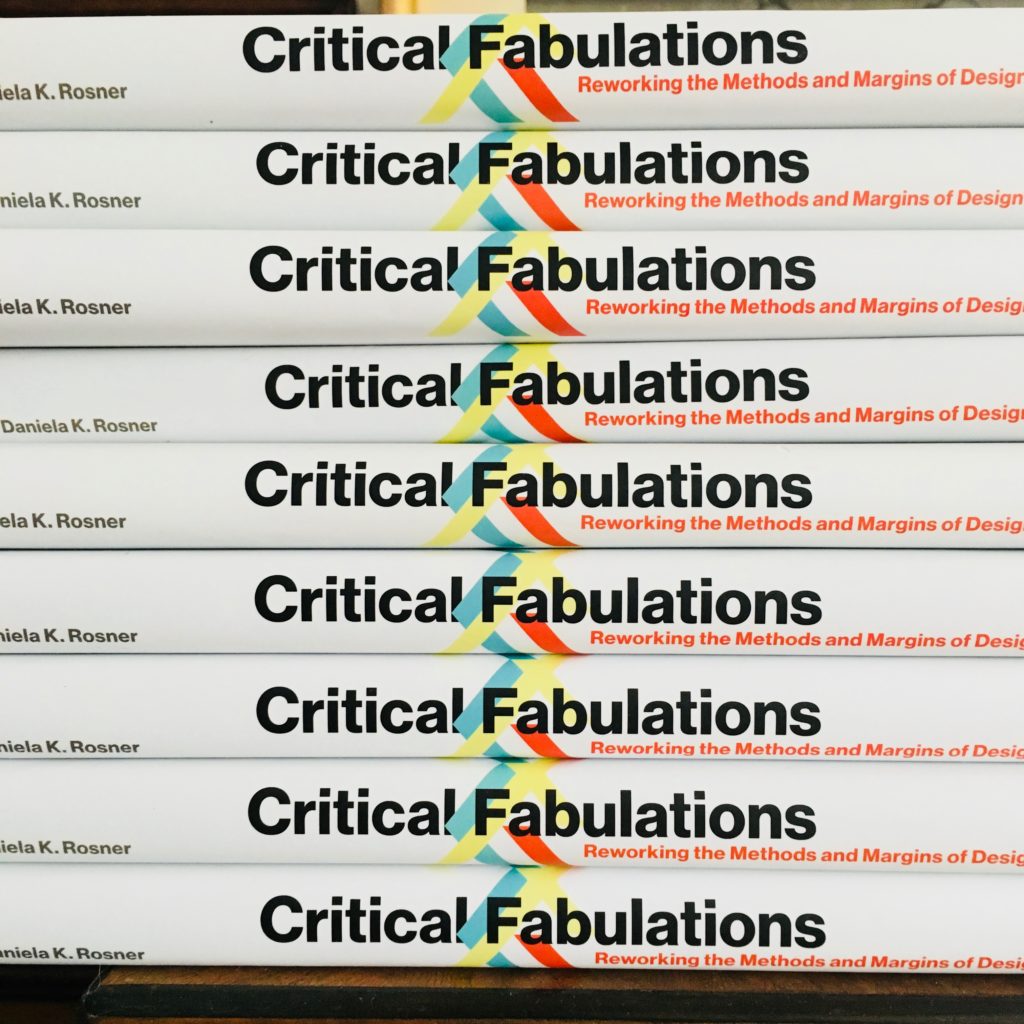When we really need it — amidst so much darkness and gloom — Daniela Rosner has woven together an interventionist design with a critical feminist view to produce something so full of promise. The generative theorising set out in the works of Donna Haraway, Anna Tsing, Saidiya Hartman and so on (all such outstanding figures in contemporary feminist scholarship) is put into practice through an assortment of design interventions. The design work is cleverly presented through a range of different voices and perspectives, altogether showing Rosner’s impulse to work creatively. But the book is much much more than this, it is about the stories we are able tell in doing design and because of design. It is about a design practice done differently — redoing design so that the absences and alternative imaginaries come to life.

What I really enjoyed in reading this book is that it offers a way for those of us in design to think with the kind of hopeful scholarship coming out of feminist theory. For so many, scholars like Haraway are a challenge to read, but not only does Rosner make this scholarship accessible, she spins something new into the ideas. She takes Haraway’s ‘speculative fabulations’ and provides very tangible ways to think ‘with’ stories, and think ‘other’ and ‘more than’ with stories. Her design interventions (constituting a patchwork across the book) provide exemplary ways of both undertaking design and also thinking with it. The centrepiece, the work Rosner has done with others on weaving the Apollo mission’s ‘core memory’, speaks then to both a designerly practice for doing technological innovation and a way to do design in responsible, sensitive and open-ended ways.
Beyond recounting her exemplary design practice, Rosner does a lovely job setting the stage in the early parts to the book. We learn how an instrumentalist design prevails in today’s science and technology, and yet Rosner shows it didn’t always and doesn’t have to be this way. I liked, in particular, her interweaving story of Haraway’s biography and Lucy Suchman’s profound influence on science and technology, which serves to draw out sometimes common and sometimes contrasting viewpoints. This stitching together of some arguably very different threads produces a lively tapestry of ideas for Rosner to work with, showing immediately her commitment to a generative working with the relations between design and technoscientific innovation.
I can’t wait to see how this book impacts practice and the future wave of designers aiming to make a difference. I for one will be adding it to my class readings.